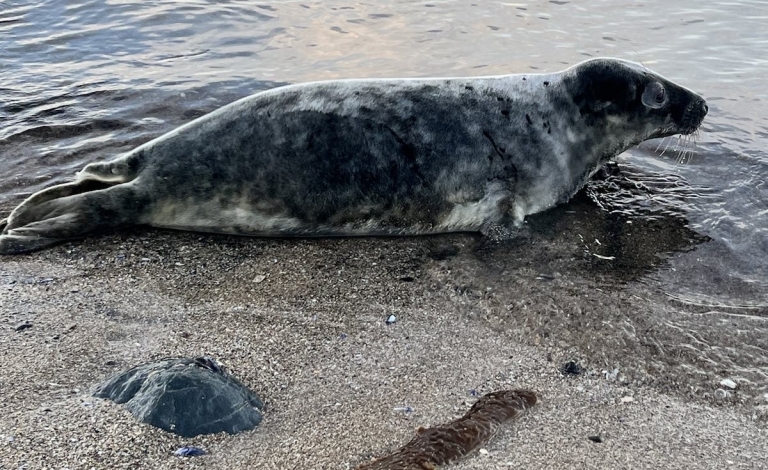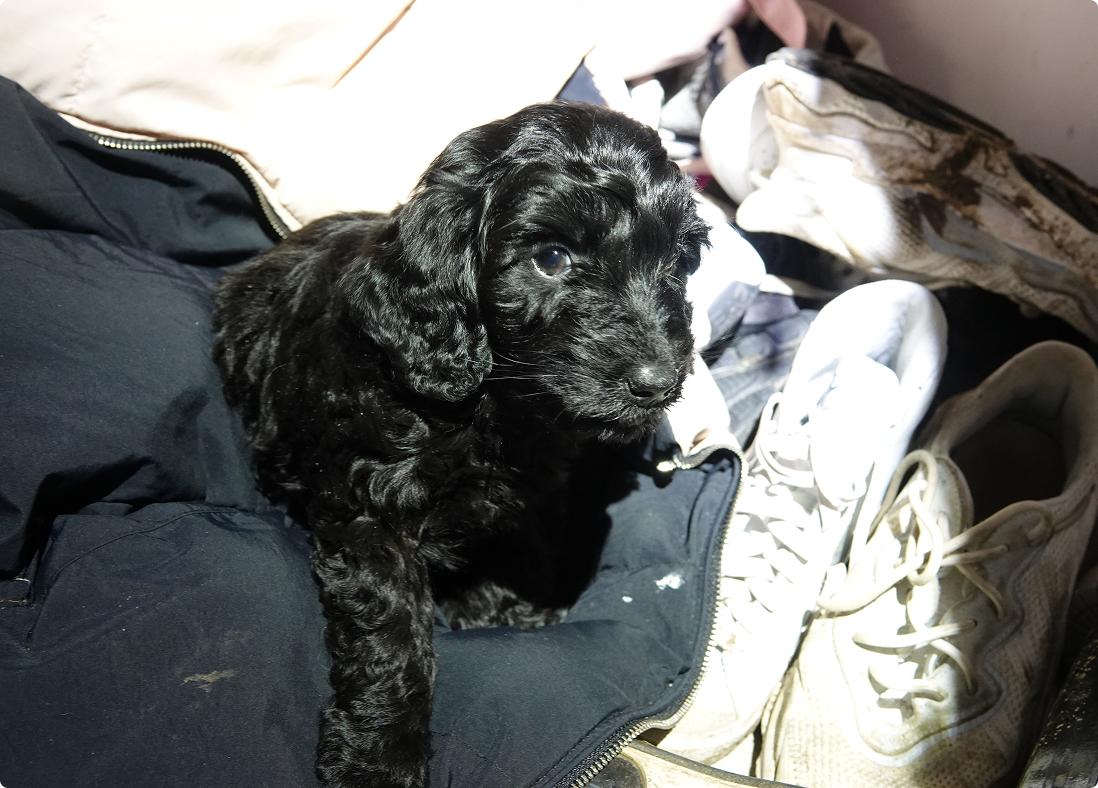
Seal
The majority of the UK’s seal population can be found in Scottish waters.
Scotland is home to two species of seals; harbour seals (sometimes known as common seals) and grey seals. The majority of the UK’s seal population can be found in Scottish waters.
Harbour seals are the smaller of the two species and adults typically 70 to 150 kilograms. Harbour seals have a rounded, dog-like head with a steep forehead and eyes to the front of their face. Usually, they are grey in colour but you may spot a rare white, blonde or black harbour seal too.
Harbour seals are born with smooth, grey coats and can swim right away whereas grey seal pups remain on land until they have shed their fluffy, white coat and are ready to learn to swim.
Grey seals are larger than harbour seals and adult males can weigh 150 – 300 kilograms! They are usually grey with dark markings and spots.
Where do seals live?
Harbour seals can be found in many places, but there is a significant population on Scotland’s islands in the far North, such as the Hebrides, and along the West coast. They like to make their home on sheltered beaches.
Grey seals prefer more exposed waters along the coast, with the large populations on the East coast of Scotland, the Outer Hebrides, Orkney and Shetland. Pregnant grey seals return to the same breeding site every autumn to give birth.
Although seals spend a lot of their lives in the water, they also spend plenty of time on land, coming ashore to moult, rest and breed. These locations are known as haul-out sites. Unfortunately, these areas are increasingly being lost to new developments.
What do seals eat?
Harbour seals normally feed within a maximum of fifty kilometres of where they haul out from. They are seafood connoisseurs and enjoy a wide variety of sea life, such as herring, whitefish, sand eels, octopus and squid.
Grey seals eat fish mostly, and like harbour seals, they enjoy whitefish such as cod and haddock. They’ll also eat flatfish such as plaice or flounder and will also prey on sand eels.
Sadly, overfishing in areas where seals hunt can reduce their food supply.
When are seal pups born?
Harbour seals pups are born in early summer whereas female grey seals give birth to their young between October and December.
Female harbour seals give birth to a single pup in June or July each year. Pups can swim and dive within just a few hours.
When grey seal pups are born, they are covered in fluffy white fur which keeps them warm until they develop a layer of blubber. After approximately sixteen days, their white coat will have moulted completely leaving a grey, smooth coat behind.
Around a month after giving birth, mother grey seals return to the sea to feed and mate again. The pups spend around two weeks on their own. When their adult coat develops they take the plunge into the sea and learn to fish for themselves.
Harbour seal mothers usually give birth in summer on the shore. Unlike grey seals, harbour seal pups can swim and dive within a couple of days! Until they are ready to be weaned, they stay with their mother, learning how to hunt for themselves. Harbour seals and their pups sometimes swim in ‘nurseries’ with other mothers to stay safe from predators. Once weaned, the pups are ready to survive on their own.
That’s wild
Seal pups drink around two and half litres of their mother’s milk every day. The milk is so rich that seal pups can double their birth weight in just three to four weeks.
Common problems
If you see a seal or pup on the beach, always maintain a safe distance, keep children away and put dogs on leads.
Never touch a seal or attempt to carry or chase them back into the sea. This is likely to cause stress for the animal and even young seals are dangerous wild animals with the potential to cause injury.
Lone seal on the beach
Sometimes well-meaning people see seals on the beach and assume they’re stranded, injured or sick. This is not usually the case. It is perfectly normal for seals to spend time onshore, therefore this is not necessarily a cause for concern.
If there are no signs of illness or injury, monitor the seal over a period of twenty four hours.
Abandoned seal pups
Seal pups will often be left by their mother whilst she feeds. If they look healthy and there are no signs of injury, they do not usually need our help. Check regularly for signs of the mother returning. Please be aware the mother will not return if you stand next to or close to the seal pup.
Injuries
Seals face a host of challenges from both nature and human activity. In particular, the sea can be a dangerous place, especially during stormy weather. Being thrown around by choppy waters can lead to serious injuries for seals or can lead to pups being separated from their parents. Likewise, colliding with fishing vessels in the water can also cause injury.
If you can see signs of injury or illness, please contact our helpline on 03000 999 999.
Signs to be aware of include:
- Coughing, sneezing or noisy, rapid breathing.
- Thick mucus coming from the nose.
- Wounds or swellings, particularly on flippers.
- Cloudy eyes, or thick mucus around them, or possibly one eye kept closed most of the time.
- Looking thin with visible ribs, hips and neck.
- Showing little or no response to activity going on around them.
- Not moving away when approached by a human.
- Fishing wire, netting or similar material wrapped around parts of the body.
Litter and pollution
The main threats from humans are pollution, for example from oil spills and toxic compounds from disposal of waste and entanglement in fishing equipment. We’ve sadly rescued seals caught up in angling gear and we have had to deal with cases of seals being collateral damage from industrial fish farming. Contaminants entering the water systems from oil and gas industries can also affect food supply, leading to a build-up of chemicals in seals, which affects their immune system and reproductive health.

Puppies across Scotland need your help
Please consider giving a monthly donation today. Give Scotland’s animals the gift of safety this winter and beyond. The criminals involved in the low-welfare puppy trade never stop. And with your help, neither will we. Every £1 matters to puppies like Winnie.